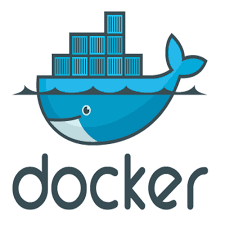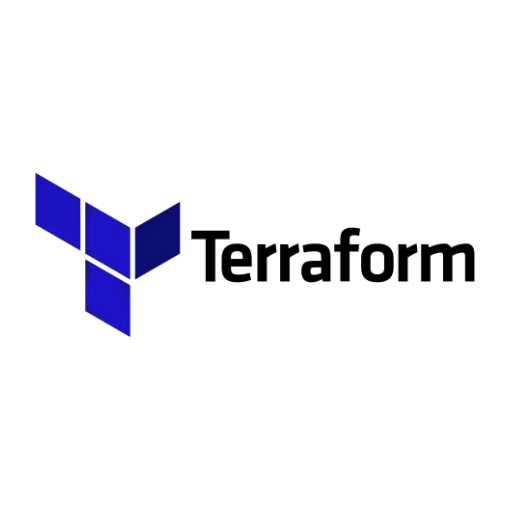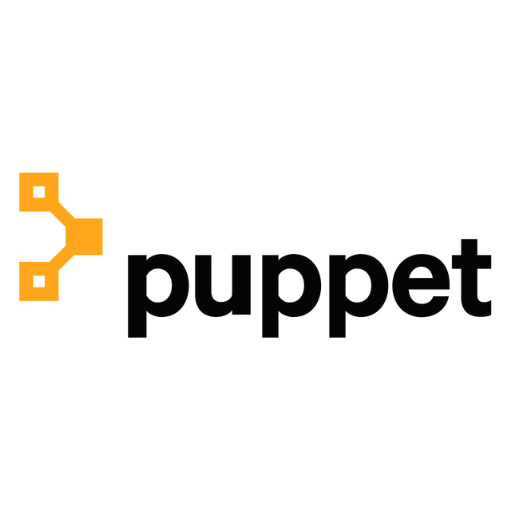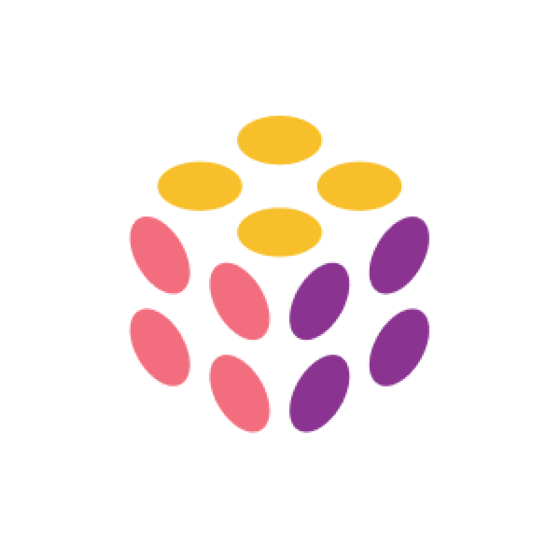Best DevOps Lifecycle Tools Shortlist
Here’s my shortlist of the best DevOps lifecycle tools:
Our one-on-one guidance will help you find the perfect fit.
DevOps lifecycle tools help teams build, test, and release software faster while keeping processes consistent and reliable.
Many developers and operations teams look for these tools when they’re dealing with slow release cycles, communication breakdowns, or manual steps that cause bugs to slip through. Without a clear system, it’s easy for delivery timelines to stretch and for quality to suffer.
I’ve worked with engineering and DevOps teams to evaluate, set up, and improve these tools in practice, seeing firsthand how they can improve speed and collaboration. This guide builds on that experience to help you choose the right tools for your team, with practical insights you can trust.
Why Trust Our Software Reviews
We’ve been testing and reviewing SaaS development software since 2023. As tech experts ourselves, we know how critical and difficult it is to make the right decision when selecting software. We invest in deep research to help our audience make better software purchasing decisions.
We’ve tested more than 2,000 tools for different SaaS development use cases and written over 1,000 comprehensive software reviews. Learn how we stay transparent & check out our software review methodology.
Best DevOps Lifecycle Tools Summary
This comparison chart summarizes pricing details for my top DevOps lifecycle tools selections to help you find the best one for your budget and business needs.
| Tool | Best For | Trial Info | Price | ||
|---|---|---|---|---|---|
| 1 | Best for containerization | Free plan available | From $9/user/month (billed annually) | Website | |
| 2 | Best for network monitoring | Not available | Free to use | Website | |
| 3 | Best for infrastructure automation | Free trial available | From $59/node/month (billed annually) | Website | |
| 4 | Best for data analytics | Free trial available | Pricing upon request | Website | |
| 5 | Best for infrastructure as code | Not available | Free to use | Website | |
| 6 | Best for configuration management | Free demo available | Pricing upon request | Website | |
| 7 | Best for metric collection | Free demo available | Pricing upon request | Website | |
| 8 | Best for complex workflows | Not available | Open source project and available for free | Website | |
| 9 | Best for CI/CD in GitHub | Free plan available | From $4/user/month (billed annually) | Website | |
| 10 | Best for orchestrating containers | Not available | Free to use | Website |
-

Docker
Visit WebsiteThis is an aggregated rating for this tool including ratings from Crozdesk users and ratings from other sites.4.6 -

Pulumi
Visit WebsiteThis is an aggregated rating for this tool including ratings from Crozdesk users and ratings from other sites.4.8 -

GitHub Actions
Visit Website
Best DevOps Lifecycle Tool Reviews
Below are my detailed summaries of the best DevOps lifecycle tools that made it onto my shortlist. My reviews offer a detailed look at the key features, pros & cons, integrations, and ideal use cases of each tool to help you find the best one for you.
Docker is a platform for developers and system administrators to build, ship, and run distributed applications. It allows teams to package applications into containers, ensuring consistency across multiple environments and enhancing deployment efficiency.
Why I picked Docker: Its ability to containerize applications makes it invaluable for ensuring consistent environments from development to production. The lightweight nature of containers means you can run more applications on the same hardware than with traditional virtual machines.
Docker's modular architecture allows for easy scaling and management of applications. The simplicity of sharing and deploying applications makes it a go-to choice for teams aiming for efficiency.
Standout features & integrations:
Features include the Docker Hub, providing a vast repository of container images to boost your development process. Docker swarm mode offers native clustering functionality, enabling easy scaling of applications. The docker compose tool simplifies multi-container application management, making setup and deployment straightforward.
Integrations include Kubernetes, AWS, Azure, Google Cloud, Jenkins, GitHub, GitLab, Bitbucket, Visual Studio Code, and Slack.
Pros and cons
Pros:
- Consistent environments across stages
- Lightweight container operations
- Easy application scaling
Cons:
- Limited Windows support
- Resource-intensive on larger setups
Nagios is a network monitoring tool used by IT professionals to track system performance, detect issues, and ensure that networks run smoothly. It helps teams identify and resolve outages, minimizing downtime and maintaining high service levels.
Why I picked Nagios: Its focus on network monitoring allows you to keep tabs on all your systems and devices in real time. You can set up alerts to notify your team of issues before they impact users.
Nagios supports a wide range of plugins, offering flexibility in monitoring different systems. The tool's scalability makes it suitable for both small and large networks, adapting to your monitoring needs.
Standout features & integrations:
Features include customizable alerting, which lets you tailor notifications to your team's needs, ensuring quick responses to issues. The dashboard provides a comprehensive overview of your network's health, making it easy to spot problems. Historical reporting allows you to track performance trends over time, aiding in capacity planning and optimization.
Integrations include AWS, Azure, VMware, Slack, PagerDuty, ServiceNow, Splunk, Grafana, Elasticsearch, and Opsgenie.
Pros and cons
Pros:
- Highly customizable alerts
- Scalable for various network sizes
- Extensive plugin support
Cons:
- Requires configuration knowledge
- Limited built-in analytics
Chef is a configuration management tool for developers and IT teams to automate infrastructure management, ensuring consistency and reducing manual errors. It helps manage complex systems by coding infrastructure configurations, making it easier to scale and maintain.
Why I picked Chef: It excels in infrastructure automation by using code to define configurations, which is perfect for maintaining consistency across environments. You can automate tasks with Chef recipes, written in Ruby, to simplify the management of resources.
Chef's test-driven development approach allows you to test configurations before deployment, reducing risk. Its flexible architecture supports a wide range of environments, making it suitable for diverse infrastructure needs.
Standout features & integrations:
Features include the Chef server, which acts as a central hub for managing configurations across your infrastructure. The Chef workstation provides the tools you need to author and test configurations locally before applying them. The Chef Automate feature offers enterprise-scale workflow automation, ensuring that your deployments are consistent and reliable.
Integrations include AWS, Azure, Google Cloud, VMware, Docker, Kubernetes, GitHub, GitLab, Jenkins, and Microsoft Azure DevOps.
Pros and cons
Pros:
- Supports test-driven development
- Flexible architecture
- Automates complex tasks
Cons:
- High resource usage
- Limited real-time monitoring
Splunk is a data analytics platform used by IT and business teams to collect, analyze, and visualize machine-generated data. It helps organizations gain insights from their data, enabling informed decision-making and improving operational efficiency.
Why I picked Splunk: It allows you to transform raw data into actionable insights. You can use its search and analysis capabilities to identify trends and anomalies in real time. Splunk's dashboards provide a visual representation of data, making it easier for your team to interpret complex information. Its scalability means you can handle large volumes of data without compromising performance.
Standout features & integrations:
Features include real-time data processing, which ensures that you get up-to-date insights for timely decision-making. The ability to create custom dashboards lets you tailor data visualization to meet your specific needs. Splunk's search processing language (SPL) offers powerful querying capabilities, enabling deep analysis of your data.
Integrations include AWS, Microsoft Azure, Google Cloud Platform, ServiceNow, Slack, Salesforce, Cisco, VMware, Docker, and Kubernetes.
Pros and cons
Pros:
- Excellent data visualization tools
- Real-time data insights
- Highly scalable platform
Cons:
- Limited out-of-the-box reports
- High cost for large deployments
Terraform is an open-source tool primarily used by IT and DevOps teams to define and provision data center infrastructure using a declarative configuration language. It automates the creation and management of resources, offering consistency and efficiency in infrastructure management.
Why I picked Terraform: It excels in infrastructure as code by allowing you to define infrastructure requirements in a simple, readable format. The tool's ability to manage complex environments with reusable modules enhances productivity.
You can track infrastructure changes easily with version control, ensuring that your team can revert to previous states if needed. Its provider-agnostic approach enables integration across multiple cloud services, giving you flexibility in resource management.
Standout features & integrations:
Features include state management, which keeps track of your real-world infrastructure, ensuring that your configurations align with actual resources. Terraform's plan feature previews changes before applying them, helping you avoid unexpected modifications. The module system allows for the reuse of configurations, promoting efficiency and consistency in infrastructure setups.
Integrations include AWS, Azure, Google Cloud, Kubernetes, VMware, IBM Cloud, Oracle Cloud, GitHub, GitLab, and Bitbucket.
Pros and cons
Pros:
- Supports multi-cloud environments
- Efficient infrastructure management
- Strong version control capabilities
Cons:
- Requires understanding of HCL
- Limited GUI options
Puppet is an IT automation software widely used by system administrators and DevOps teams to manage configurations and automate provisioning across entire infrastructures. It helps ensure consistency and reliability, reducing manual errors and saving time.
Why I picked Puppet: Its strong focus on configuration management makes it ideal for standardizing environments across your infrastructure. You can define configurations in code, ensuring that your systems are always in the desired state.
Puppet's model-driven approach allows for easy scalability, handling thousands of systems efficiently. The tool's reporting and visualization capabilities provide insights into system states, aiding in proactive management.
Standout features & integrations:
Features include node management, which lets you organize and control your infrastructure with ease. The event inspector helps you track changes and understand their impact on your systems. Puppet's data-driven approach allows you to manage configurations using external data sources, enhancing flexibility.
Integrations include AWS, Azure, Google Cloud, VMware, Docker, Kubernetes, GitHub, GitLab, Jenkins, and ServiceNow.
Pros and cons
Pros:
- Strong configuration management
- Easy scalability for large systems
- Code-defined configurations
Cons:
- Complex initial setup
- High resource consumption
Prometheus is an open-source monitoring and alerting toolkit for developers and IT teams to collect and query metrics from systems and applications. It helps teams monitor performance and troubleshoot issues by providing real-time insights into system behavior.
Why I picked Prometheus: Its focus on metric collection makes it ideal for teams needing detailed performance data. You can use its flexible query language, PromQL, to extract precisely the data you need.
The time-series database is optimized for storing and retrieving high-dimensional data efficiently. With built-in alerting, you can set up notifications based on specific conditions, ensuring your team is always informed of critical changes.
Standout features & integrations:
Features include service discovery, which allows Prometheus to automatically detect and scrape metrics from new targets. The data model supports multidimensional data collection, enabling you to capture detailed metrics. Prometheus provides an easy-to-use dashboard for visualizing data trends and patterns.
Integrations include Grafana, Kubernetes, Docker, Consul, Etcd, Amazon EC2, Azure Monitor, Google Cloud Monitoring, PagerDuty, and Slack.
Pros and cons
Pros:
- Flexible query language
- Efficient time-series database
- Built-in alerting capabilities
Cons:
- Complex configuration process
- Limited long-term storage
GoCD is a continuous delivery tool tailored for teams managing intricate software workflows. It offers businesses the ability to automate and visualize their build processes, making it easier to handle complex tasks efficiently.
Why I picked GoCD: It excels in managing complex workflows with its advanced pipeline modeling. You can visualize your entire workflow, making it easier to identify bottlenecks.
Its value stream map feature helps track changes from commit to deploy, ensuring smooth operations. The ability to parallelize execution across multiple agents allows for faster delivery of projects.
Standout features & integrations:
Features include pipeline as code, which lets you manage your CI/CD configurations through code, providing version control. The feature of dependency management allows you to handle dependencies between different pipelines efficiently. Environment management helps you configure and manage different environments with ease.
Integrations include Slack, GitHub, Bitbucket, GitLab, Docker, Kubernetes, AWS, Microsoft Azure, Google Cloud, and Jira.
Pros and cons
Pros:
- Advanced pipeline modeling
- Visualizes complex workflows
- Parallel execution of tasks
Cons:
- Steeper learning curve
- Limited community support
GitHub Actions is a CI/CD tool integrated within GitHub, designed for developers looking to automate their software workflows. It enables teams to build, test, and deploy code directly from their repositories, enhancing the development process.
Why I picked GitHub Actions: It offers stable integration with GitHub, allowing your team to automate workflows without leaving the platform. You can define workflows using YAML files, making setup straightforward and flexible. The tool supports parallel execution of jobs, speeding up the CI/CD process. With customizable actions, you can tailor workflows to meet specific project needs, ensuring efficient automation.
Standout features & integrations:
Features include support for matrix builds, which lets you test multiple versions of your software simultaneously, increasing coverage and reliability. The ability to use self-hosted runners gives you control over the environment where your workflows run. GitHub Actions also provides a marketplace for reusable actions, helping you quickly set up and share workflows across projects.
Integrations include Slack, AWS, Azure, Google Cloud, Docker, Kubernetes, Terraform, Heroku, Twilio, and Datadog.
Pros and cons
Pros:
- Supports parallel job execution
- Customizable workflows
- Access to reusable actions
Cons:
- Limited to GitHub repositories
- Requires YAML knowledge
Kubernetes is an open-source platform designed for automating the deployment, scaling, and management of containerized applications. It's primarily used by developers and IT teams who need to manage complex, distributed systems efficiently.
Why I picked Kubernetes: Its orchestration capabilities allow you to manage multiple containers across different environments without hassle. Features like automated rollouts and rollbacks ensure your applications are updated smoothly.
The self-healing capabilities mean your team can focus on development without worrying about downtime. Scalability is at its core, allowing you to adjust to workload demands effortlessly.
Standout features & integrations:
Features include horizontal scaling, which automatically adjusts the number of running containers based on demand. Load balancing and distribution ensure that traffic is evenly spread across your applications, enhancing performance. The secret and configuration management features help you store sensitive information securely.
Integrations include Docker, Prometheus, Helm, Jenkins, Istio, Grafana, ElasticSearch, Fluentd, Kibana, and Apache Kafka.
Pros and cons
Pros:
- Excellent for large-scale deployments
- Automates rollouts and rollbacks
- Self-healing capabilities
Cons:
- Requires significant resources
- Needs frequent updates
Other DevOps Lifecycle Tools
Here are some additional DevOps lifecycle tools options that didn’t make it onto my shortlist, but are still worth checking out:
- Bitbucket Pipelines
For team collaboration
- Ansible
For automation simplicity
- New Relic
For real-time performance monitoring
- Travis CI
For open-source projects
- Azure DevOps
For Microsoft ecosystem teams
- TeamCity
For custom build configurations
- Bamboo
For Atlassian toolchain integration
- CircleCI
For fast parallel testing
- GitLab CI/CD
For integrated version control
- Jenkins
For flexible build automation
DevOps Lifecycle Tool Selection Criteria
When selecting the best DevOps lifecycle tools to include in this list, I considered common buyer needs and pain points like integration with existing workflows and ease of use. I also used the following framework to keep my evaluation structured and fair:
Core Functionality (25% of total score)
To be considered for inclusion in this list, each solution had to fulfill these common use cases:
- Automating build and deployment processes
- Monitoring and alerting on system performance
- Managing configuration and infrastructure as code
- Integrating with version control systems
- Supporting continuous integration and continuous delivery
Additional Standout Features (25% of total score)
To help further narrow down the competition, I also looked for unique features, such as:
- Advanced analytics and reporting capabilities
- Customizable dashboards and visualizations
- AI-driven automation and recommendations
- Multi-cloud environment support
- Built-in security and compliance checks
Usability (10% of total score)
To get a sense of the usability of each system, I considered the following:
- Intuitive user interface design
- Clarity and accessibility of documentation
- Ease of workflow customization
- Responsiveness and speed of the system
- Availability of the user community and forums
Onboarding (10% of total score)
To evaluate the onboarding experience for each platform, I considered the following:
- Availability of training videos and tutorials
- Access to interactive product tours
- Use of chatbots for quick guidance
- Offering webinars and live demos
- Provision of ready-made templates for setup
Customer Support (10% of total score)
To assess each software provider’s customer support services, I considered the following:
- Availability of 24/7 support services
- Responsiveness of support teams
- Access to a dedicated account manager
- Availability of a comprehensive help center
- Quality of support through various channels like chat, email, and phone
Value For Money (10% of total score)
To evaluate the value for money of each platform, I considered the following:
- Comparison of pricing against similar tools
- Flexibility of pricing plans
- Transparency of pricing structure
- Inclusion of essential features in base plans
- Discounts or offers for long-term contracts
Customer Reviews (10% of total score)
To get a sense of overall customer satisfaction, I considered the following when reading customer reviews:
- Consistency of positive feedback
- Frequency of updates and improvements
- Commonly reported issues or bugs
- Customer perception of support quality
- Overall satisfaction with the tool's performance
How to Choose DevOps Lifecycle Tools
It’s easy to get bogged down in long feature lists and complex pricing structures. To help you stay focused as you work through your unique software selection process, here’s a checklist of factors to keep in mind:
| Factor | What to Consider |
| Scalability | Can the tool handle your team’s growth? Check if it supports increasing workloads, users, and projects without significant performance drops or costly upgrades. |
| Integrations | Does it connect with your existing tools? Ensure it works with your current tech stack, like CI/CD systems, cloud providers, and version control systems. |
| Customizability | Can you tailor it to fit your workflows? Consider if you can adjust settings, dashboards, and processes to align with your team’s unique needs and preferences. |
| Ease of use | Is the tool intuitive for your team? Look for a user-friendly interface and straightforward navigation to reduce the learning curve and boost productivity. |
| Implementation and onboarding | How quickly can your team start using it? Evaluate the setup time, availability of training resources, and support during the initial stages of adoption. |
| Cost | Does it fit within your budget? Compare pricing plans, hidden fees, and the value you get for the cost. Consider long-term expenses and any discounts for annual payments. |
| Security safeguards | Are your data and processes protected? Assess the tool's security features like encryption, access controls, and compliance with industry standards to protect sensitive information. |
| Support availability | Is help available when you need it? Check the provider’s support options, response times, and availability of resources like documentation and community forums. |
What Are DevOps Lifecycle Tools?
DevOps lifecycle tools are software solutions that support the development, deployment, and operation of applications by automating and integrating different phases of the software lifecycle. They are typically used by developers, IT operations teams, and DevOps engineers to improve collaboration and efficiency.
Automation, integration with existing systems, and real-time monitoring features help with managing complex workflows, reducing errors, and speeding up delivery. Overall, the best DevOps tools enhance productivity and ensure consistent, high-quality software delivery.
Features of DevOps Lifecycle Tools
When selecting DevOps lifecycle tools, keep an eye out for the following key features:
- Automation: Streamlines repetitive tasks like builds and deployments, saving time and reducing manual errors.
- Integration capabilities: Connects seamlessly with existing tools and platforms, ensuring smooth workflows and data flow.
- Real-time monitoring: Provides live insights into system performance, helping teams quickly identify and resolve issues.
- Scalability: Supports growing workloads and user demands, ensuring consistent performance as your team and projects expand.
- Customizable workflows: Allows you to tailor processes to fit your team's specific needs, improving flexibility and efficiency.
- Version control support: Integrates with systems like Git to manage code changes and history, enhancing collaboration and tracking.
- DevOps Security Tool Safeguards: Offers features like encryption and access controls to protect sensitive data and maintain compliance.
- Analytics and reporting: Provides detailed reports and data visualization to track performance trends and make informed decisions.
- Self-hosted options: Offers the flexibility to run the tools on your own infrastructure, giving you more control over your environment.
Benefits of DevOps Lifecycle Tools
Implementing DevOps lifecycle tools provides several benefits for your team and your business. Here are a few you can look forward to:
- Improved collaboration: By integrating with version control and communication tools, these solutions foster better teamwork and transparency.
- Faster delivery: Automation features help speed up the release cycle, allowing your team to bring products to market quicker.
- Enhanced quality: Real-time monitoring and testing capabilities catch issues early, improving the overall quality of software.
- Resource efficiency: Scalability and self-hosted options let you optimize resource use, reducing costs and maximizing performance.
- Increased security: Built-in security safeguards protect data and ensure compliance, giving you peace of mind.
- Data-driven insights: Analytics and reporting features provide valuable insights, helping you make informed decisions and improve processes.
Costs and Pricing of DevOps Lifecycle Tools
Selecting DevOps lifecycle tools requires an understanding of the various pricing models and plans available. Costs vary based on features, team size, add-ons, and more. The table below summarizes common plans, their average prices, and typical features included in DevOps lifecycle tools solutions:
Plan Comparison Table for DevOps Lifecycle Tools
| Plan Type | Average Price | Common Features |
| Free Plan | $0 | Basic automation, limited integrations, and community support. |
| Personal Plan | $5-$25 /user /month | Advanced automation, more integrations, and basic analytics and reporting. |
| Business Plan | $30-$75 /user /month | Full automation capabilities, enhanced security features, and priority support. |
| Enterprise Plan | $100-$200 /user /month | Customizable workflows, dedicated account management, and comprehensive analytics and compliance. |
DevOps Lifecycle Tools FAQs
Here are some answers to common questions about DevOps lifecycle tools:
What are the tools used in the DevOps lifecycle?
DevOps lifecycle tools include various applications for planning, developing, building, testing, releasing, deploying, operating, and monitoring software. Popular tools include Jira for planning, Git for version control, Jenkins for building, Selenium for testing, and Prometheus for monitoring. These tools help automate and streamline different stages of software development.
What are the 7 Cs of the DevOps lifecycle?
The 7 C’s of the DevOps lifecycle are Continuous Development, Continuous Integration, Continuous Testing, Continuous Deployment, Continuous Feedback, Continuous Monitoring, and Continuous Operations. Each phase represents a crucial part of the DevOps process, ensuring smooth transitions and constant improvement throughout the software lifecycle.
What are the three main phases of the DevOps lifecycle?
The three main phases of the DevOps lifecycle are continuous development, continuous deployment, and continuous operations. These phases focus on automating and improving the software development process, ensuring that code changes move efficiently from development to production with minimal downtime and errors.
How do all DevOps tools work together?
DevOps tools work cohesively by integrating into various phases of the software development lifecycle. They automate manual processes, promote collaboration between development and operations teams, and ensure the smooth progression of code changes from planning to deployment. This integration enhances efficiency and reduces bottlenecks.
What are the key benefits of using DevOps lifecycle tools?
DevOps lifecycle tools offer several benefits, including improved collaboration, faster delivery, enhanced quality, resource efficiency, increased security, and data-driven insights. These tools automate processes, integrate with existing systems, and provide real-time monitoring, helping teams deliver high-quality software consistently.
How can DevOps lifecycle tools enhance security?
DevOps lifecycle tools enhance security by integrating security checks into the development process, automating vulnerability assessments, and ensuring compliance with industry standards. Features like access controls, encryption, and automated testing help protect sensitive data and prevent security breaches throughout the software lifecycle.
What's Next?
Boost your SaaS growth and leadership skills. Subscribe to our newsletter for the latest insights from CTOs and aspiring tech leaders. We'll help you scale smarter and lead stronger with guides, resources, and strategies from top experts!






















